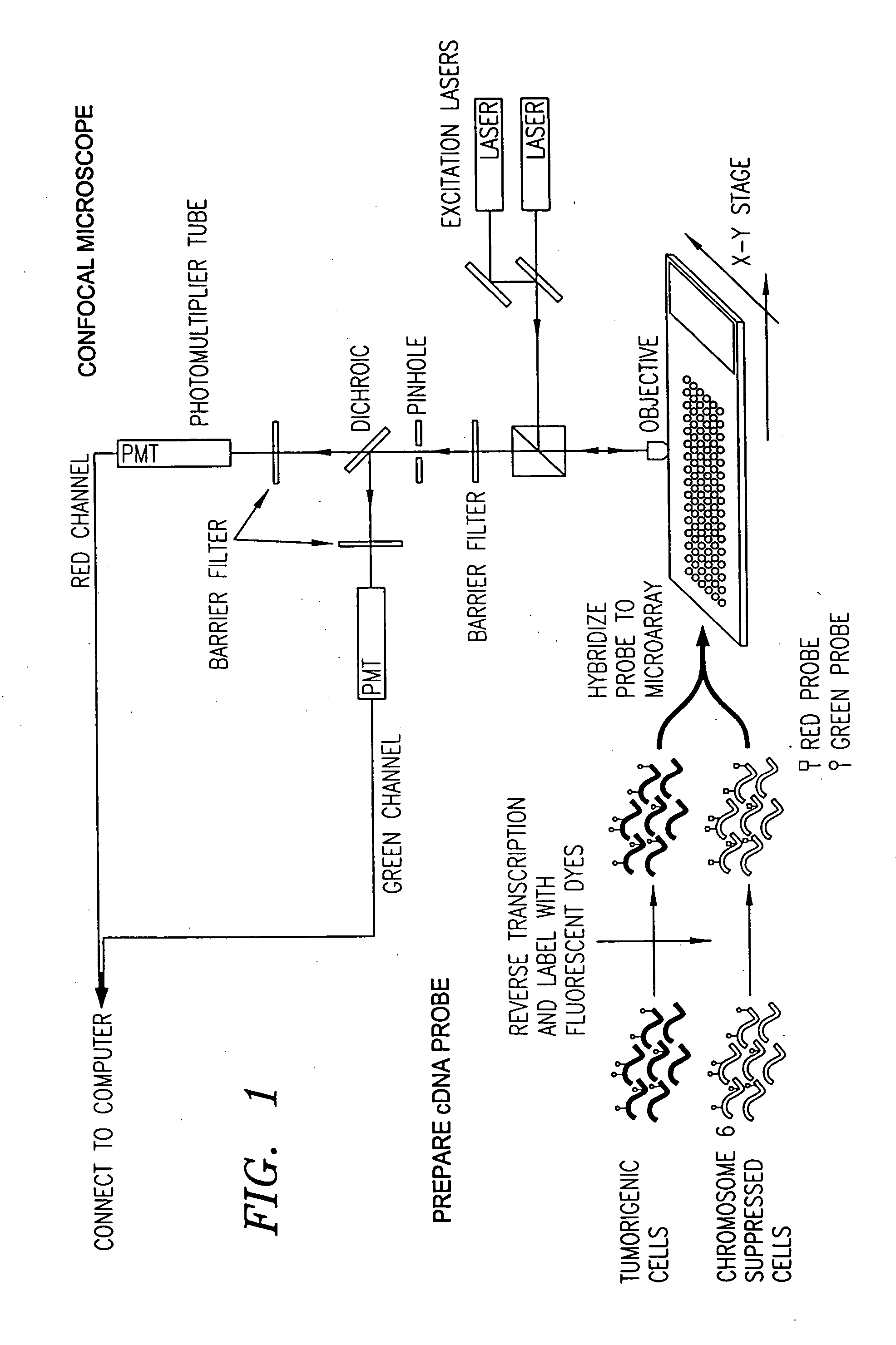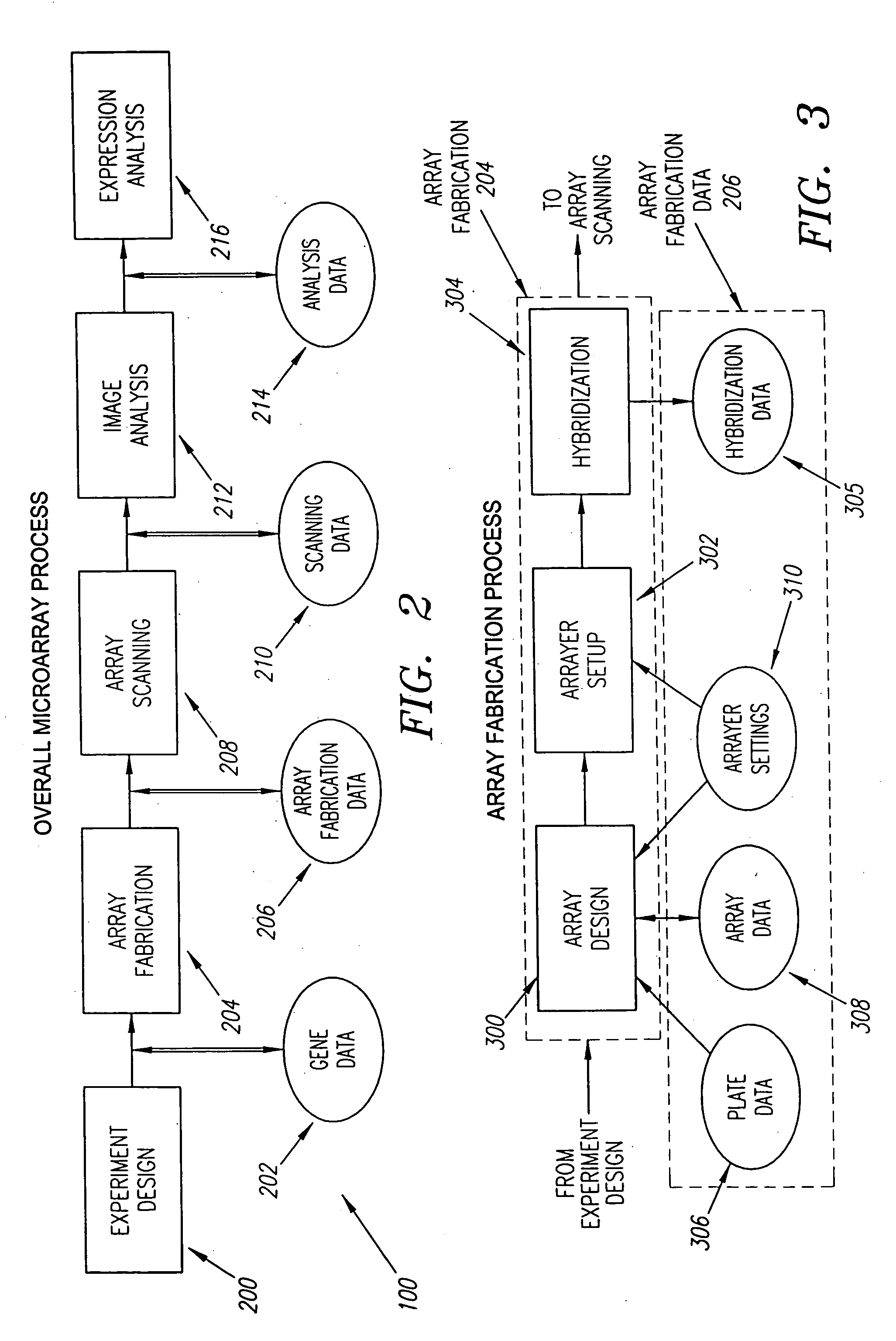System and method for automatically identifying sub-grids in a microarray
a gene expression and microarray technology, applied in the field of automatic identification of sub-grids in gene expression microarrays, can solve the problems of the transcriptional state of a large number of genes, and the inability to perform studies, etc., to achieve the effect of reducing the number of genes and reducing the number of errors
- Summary
- Abstract
- Description
- Claims
- Application Information
AI Technical Summary
Benefits of technology
Problems solved by technology
Method used
Image
Examples
Embodiment Construction
[0050] The term “species” as used herein with respect to nucleic acids refers to a group of nucleic acid molecules, all of which comprise the same nucleotide sequence, allowing all to hybridize under stringent conditions to the same probe.
[0051]FIG. 2 depicts basic steps in the overall microarray process 100 according to a preferred embodiment, and the form of the data produced and carried forward during this process. The data is stored in a computerized database system that has memory sufficient to hold the data collected from each step in the microarray process 100, and has the capability of relating the data collected in each step with the other data collected throughout the process 100.
[0052] In the first step 200 of the microarray process 100, the gene expression experiment is designed. In this step 200, the genes to be tested are identified and recorded as data 202 for reference in any of the subsequent steps in the microarray process 100. Also, in this step 200, the basic d...
PUM
| Property | Measurement | Unit |
|---|---|---|
| chemical materials | aaaaa | aaaaa |
| size | aaaaa | aaaaa |
| mode distance | aaaaa | aaaaa |
Abstract
Description
Claims
Application Information
 Login to View More
Login to View More - R&D
- Intellectual Property
- Life Sciences
- Materials
- Tech Scout
- Unparalleled Data Quality
- Higher Quality Content
- 60% Fewer Hallucinations
Browse by: Latest US Patents, China's latest patents, Technical Efficacy Thesaurus, Application Domain, Technology Topic, Popular Technical Reports.
© 2025 PatSnap. All rights reserved.Legal|Privacy policy|Modern Slavery Act Transparency Statement|Sitemap|About US| Contact US: help@patsnap.com



